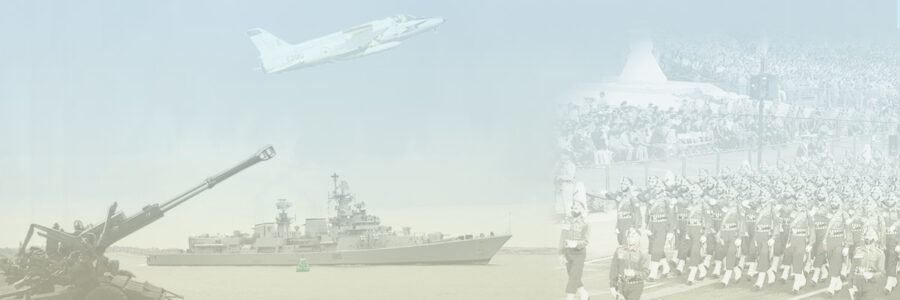The Chinese Navy, Its Regional Power and Global Reach
The Chinese People's Liberation Army Navy (PLAN)’s recent accomplishments are impressive but have not gone beyond ‘pocket excellence’, as its overall structure and equipment are still out of date. However, the PLAN now has ships and powerful weapons that enable it to extend its combat range and engage its foes in a relatively large-scale maritime campaign beyond the Yellow Sea—its traditional battlefield. Depending on the nature of operations, it may already be able to carry out blue water missions around the first island chain in the West Pacific.
The Creation of Indian Integrated Commands: Organisational Learning and the Andaman and Nicobar Command
India took an unprecedented step 10 years ago by setting up a joint theatre operational command for the Andaman and Nicobar Islands (ANC). This article seeks to examine the following questions: why did India decide to establish its first joint operational command? Why has the creation of this and other unified commands been so incremental in the Indian context? What are the arguments for and against jointness, integration and joint operational commands in the Indian context?
India’s Maritime Core Interests
While the maritime doctrine was published by the Indian navy in 2004 and improved upon in 2007, the core interests identified were as seen through the prism of the navy. The national maritime interests of India are distinctly different from the ones identified by the Indian navy and need to be analysed to understand the nuances and the dimensions of such interests so as to promote India's maritime power potential.
A Neo-Nixon Doctrine for the Indian Ocean: Helping States Help Themselves
In recent years the Indian Ocean has received significant attention from the defence-intellectual community in the United States. However, the actual strategic importance of the region to US interests is less clear. In an environment of fiscal austerity, if commitments abroad are not firmly linked to interests, any significant involvement in a region of secondary concern could contribute to ‘imperial overstretch’.
Indian Ocean Naval Symposium: Uniting the Maritime Indian Ocean Region
The Indian Ocean, the third largest oceanic expanse in the world, is the birthplace of maritime civilisation and has always been an ‘active’ ocean. It is now perceived to be the world's centre of gravity in strategic terms, proving the prophetic words that are often attributed to A.T. Mahan: ‘Whoever controls the Indian Ocean will dominate Asia … the destiny of the world would be decided on its waters’.
Somali Piracy: A Form of Economic Terrorism
Piracy over the years has been driven by geography, political instability and the availability of safe havens. Apart from these established factors, economics too play a role. This article reviews and examines Somali piracy, which has flourished due to the international community ignoring the growing instability in Somalia, the rampant illegal fishing and toxic waste dumping. It examines the international response, the legal and economic factors and advocates that piracy be viewed as a form of economic terrorism and be combatted as such, as well as by land-based operations.
Asymmetric Warfare: A View from India
Coined a few years ago, ‘asymmetric warfare’ is an umbrella term that includes insurgent and terrorist campaigns that Western militaries were forced to contend with in the course of external interventions. Asymmetric wars for Western countries are wars of choice, not wars of necessity.
Role of Force in Statecraft: Declining Utility or Inescapable Necessity
Recent debates amongst the strategic community on the utility of force in statecraft have thrown up interesting perspectives that have seldom been debated in India. While great power rivalries, inter-state conflicts and coalition conflicts still remain distinct possibilities in the future, major principles of war fighting, conflict resolution, statecraft and nuclear deterrence have since been turned on their head when confronted by non-state actors and non-traditional threats.
A Founding Era for Combined Maritime Security?
In a nutshell the article posits that American naval power, and thus the United States' ability to police the seas, will continue to decline, and that Washington is attempting to compensate by fashioning a new paradigm of multinational maritime security. With no likely candidate for a global navy in the offing the challenge is to create one or more multinational guarantors of free navigation. I attempt to gaze into the future, discerning the likely dynamics of this coalition-building project.
Towards a Proactive Military Strategy: ‘Cold Start and Stop’
The article reviews the Cold Start doctrine in light of the limited war doctrine. It argues that the launch of strike corps entails a risk prone war expansion. War termination should therefore be short of the launch of strike corps offensives. It suggests a 'Cold Start and Stop' strategy with limited offensives by integrated battle groups being used to coerce Pakistan. Pakistani amenability to Indian war aims would be dependent on India offering incentives diplomatically alongside. India's limited war doctrine, currently not articulated, must be informed by such a war waging strategy.
A More Centralised State after War
The government headed by President Mahinda Rajapaksa would easily be deemed the most decisive one in post-independence Sri Lanka. What the government leadership decides is implemented forthwith. The military crushing of the Liberation Tigers of Tamil Eelam (LTTE) that had eluded five successive governments is the most outstanding example. Nothing could stand in the way of the government's decision, neither the fear of failure nor of foreign pressure.
Strategies to Tackle Fourth Generation Warfare (4GW): An Aerial Perspective
The changing nature of warfare, as the twentieth century drew to a close, saw the increased proliferation of conflict between non-state actors and the state. Small wars, wars of liberation, insurgencies, terrorism, proxy wars, sub-conventional warfare and a host of other terminologies emerged that attempted to fingerprint this genre of low spectrum warfare. Initially, it was felt that it was risky to use air power in this kind of warfare and that surface forces were best equipped to fight these wars with only superficial support from air forces.
Signals and Orchestration: India’s Use of Compellence in the 2001–02 Crisis
How effective was the Indian government in sending clear, coercive signals and orchestrating them into coherent messages during 'Operation Parakram' in 2001-02? This study finds that compellence was hampered by three factors: (1) the government kept changing its demands; (2) the lack of adequate civil-military coordination; and (3) the government engaged in a dual-track policy of direct coercion of Pakistan, while simultaneously engaging the United States to put pressure on Pakistan. Ultimately, these two policy strands worked at cross-purposes to each other.
Pakistani Nuclear Use and Implications for India
The robustness of India's nuclear doctrine would face a severe challenge in the case of conventional military offensives into Pakistan in a future Indo-Pak conflict. Such offensives are possible in case Pakistan's nuclear threshold is taken as high and its doctrine one of 'last resort'. However, Pakistani nuclear use options may include lower order nuclear use. In light of this, it recommends that India take a serious look at the Limited War concept as well as revise its nuclear doctrine to 'flexible nuclear retaliation'.
Trends in Thinking about Warfare
Militaries the world over need to study and understand lessons from the ongoing military operations in Afghanistan, Iraq, and Lebanon, and the new knowledge needs to be placed in context. Neglected military history itself provides enduring lessons. This article attempts to capture the trends and debates in the understanding of current warfare and outlines how lessons of war are interpreted with a focus on future trends in war-fighting. The article concludes with some policy suggestions and areas for further inquiry.
The Interface of Strategic and War Fighting Doctrines in the India–Pakistan Context
There has been a shift to a deterrent strategic doctrine with an offensive bias. India's strategic doctrine is thus potentially a compellent one. However, cognizance of the need for limitation to conflict in the nuclear age entails identification of the implications of compellence for both conventional and nuclear doctrines. On the conventional plane, the hiatus between pivot corps and strike corps offensives is taken as a key 'exit point' for war termination efforts.

















